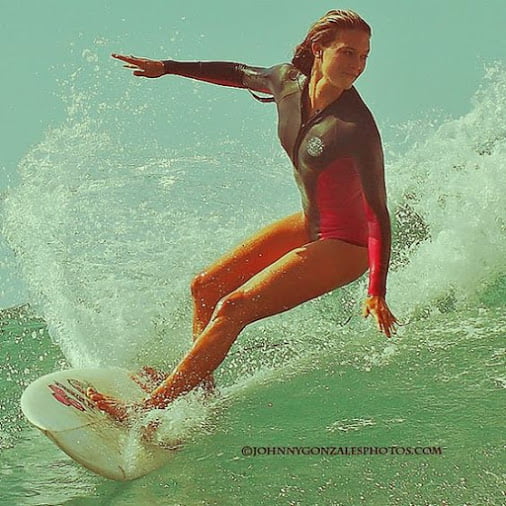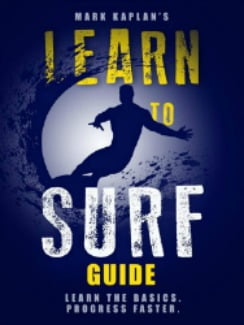Basics of Short Board Surfing
The basics of short board surfing are first learned riding foam waves and then progress to shorter boards and real waves. It is important not to go to too short of a board which is called low volume without the appropriate progress of a little shorter at a time.
Short boards begin at 6′ 10″ and are normally less than 21″ wide and 2 3/4″ thick. But, when progressing to your final short board, you want the width to be at least 21″ wide and 2 3/4″ thick. These dimensions give more volume and make paddling, wave catching, and riding easier.

The Short Board Basics
To catch real waves, surfers paddle the area where they are breaking. The line up is usually a good indication of where they are breaking. Line up etiquette should allow for each surfer getting rides in turn. Don’t paddle for a wave if another surfer is closer to the apex (where the foam first comes over the lip) or if another surfer is already on the wave coming your way.
When you spot a real wave forming, determine where you have to paddle so that it rolls under your board. When the lip is over your head, you paddle hard three times until the wave has your board. Then you put your hands on the board in a man’s push up position (next to your chest) and pop up.
You can get into the pocket quicker and especially on close out waves (like in sand bar bottoms) by paddling for the wave and before popping up, turn the nose of the board toward the pocket. This is faster than going down the face and doing a bottom turn into the pocket.
Three basic maneuvers on a short board. The first is the bottom turn, then accelerating (some call it pumping), then a cut back. These are the three basic maneuvers for all competitors before they start adding ripping the lip, aerials, floating, and reverses.
A bottom turn is executed by turning the upper body in the direction of the turn beginning with the eyes, then the head, and finally the shoulders and arms. Pressure is applied to the toes or heels, whichever is on the side of the carve. These are used to get into the pocket, begin a trick up the face, or to escape over the top in a close out wave.
Accelerating is moving the nose of the board up and down the face of the wave with your front foot. Two or three pushes should develop the speed to outrun the lip and begin a trick. After a trick, the surfer accelerates again for the next trick.
The cut back is to return to the power of the wave which is the apex, or to stall waiting for the power or maybe a barrel. In the cut-back, the surfer reverses direction by turning the upper body away from the direction being traveled. The eyes, head, shoulders and arms reverse with pressure on the toes or heels on the side of the carve. This is also the maneuver on top of the wave to rip the lip and head back down after the bottom turn to ride up the face.
Have fun.
Learn More
For Oceanside Surf Lessons, see the Home Page
See the Post Surf Lessons Begin with Foam Waves
See the Post What You Learn in a 2 Hour Lesson
See the Post How to Progress in Surfing
See My Dry Land and In Water Demo video
See How to Catch a Green/Real Wave video
i have lowered my book and course prices for the lock down.
My New Surfing Course in an E-Book plus Demo Video
Get the 18 Chapter, 7,500 word Course that can prepare you for a lesson or give you the fundamentals if you are going to try it on your own. 10 years of teaching 350 students a year has given me the insights on the most precise measures you must follow for success. This course is what I teach on the dry land and in water instruction. The Course includes a 15 minute video on my dry land and in water demonstration. Only $4.95
Buy the E-book for $2.99. Learn to Surf (Different cover but same book)
Buy the Paperback on Amazon $6.95
Get Learn to Surf Course in 29 minute audio. Great prep for a lesson, reviewing after a lesson, learning on your own, refreshing after not having surfed for a while. See Table of Contents. Only $7.95

80 page Learn to Surf Book
![Surf Instructions Beginner to Advanced: Learn to Ride Waves by [Kaplan, Mark]](https://images-na.ssl-images-amazon.com/images/I/51HswFtoBQL.jpg)